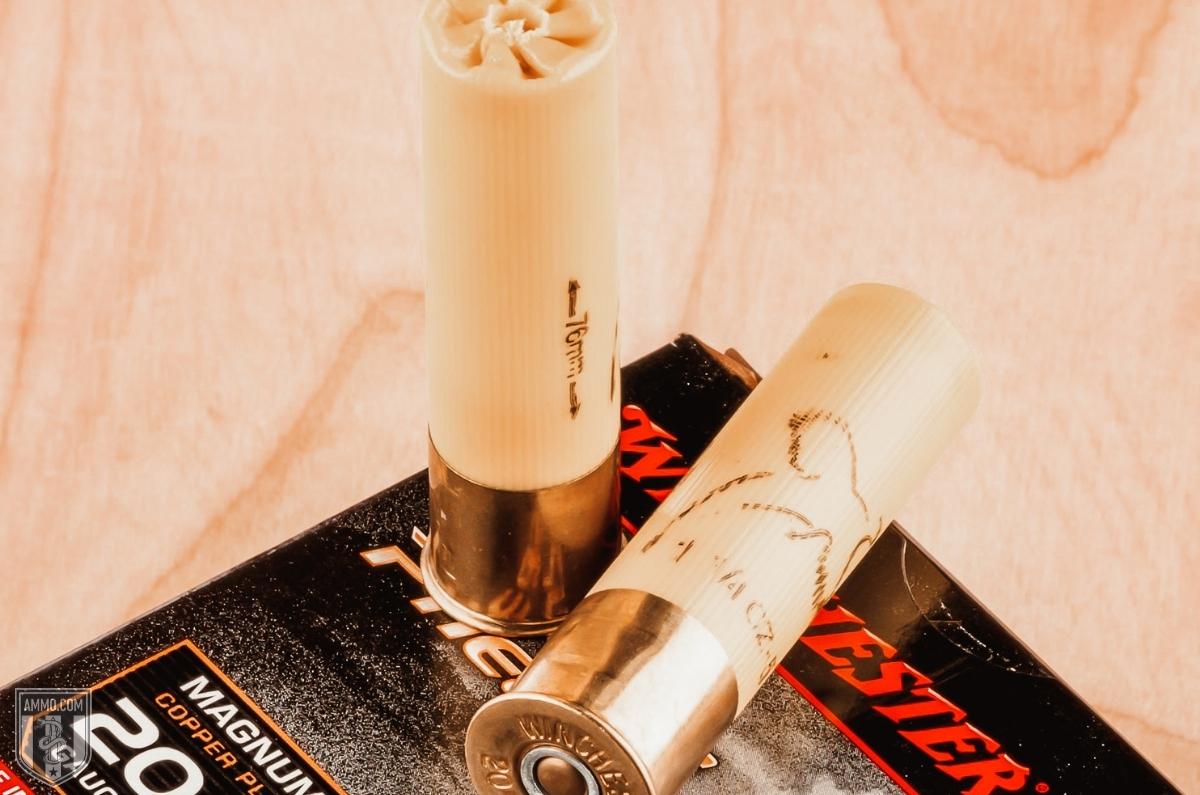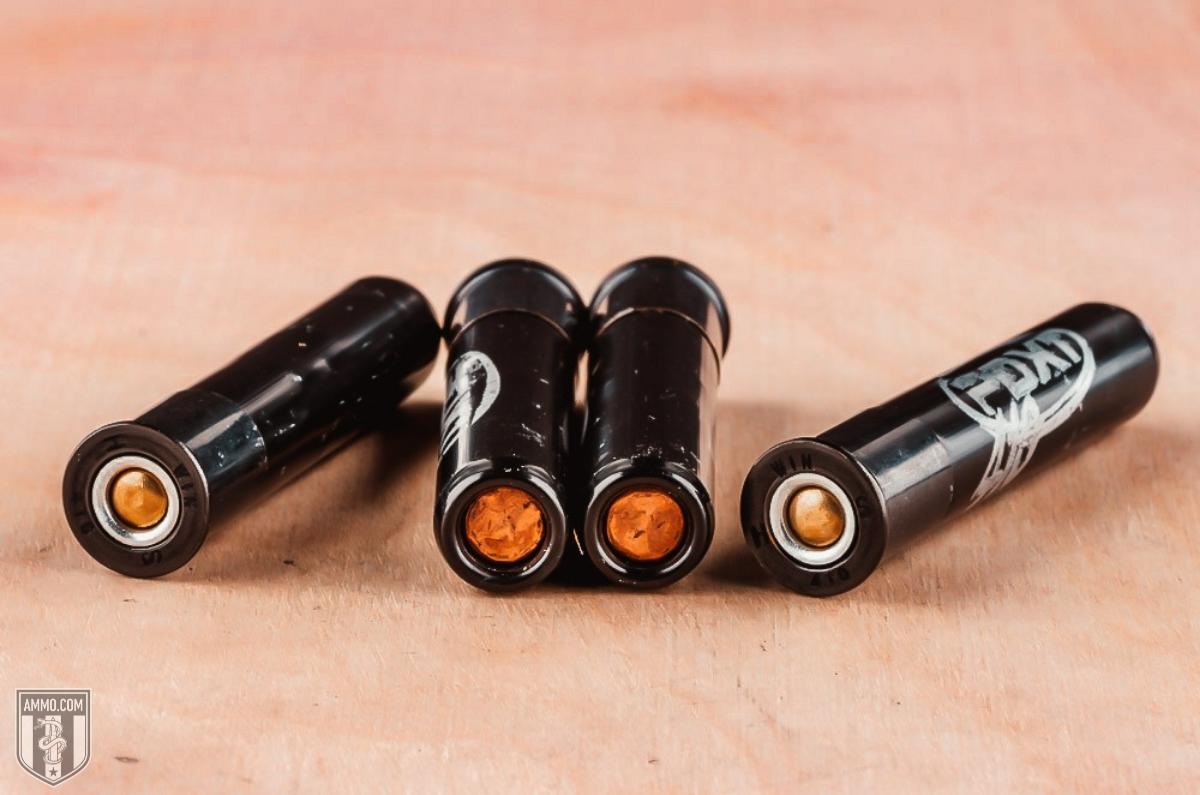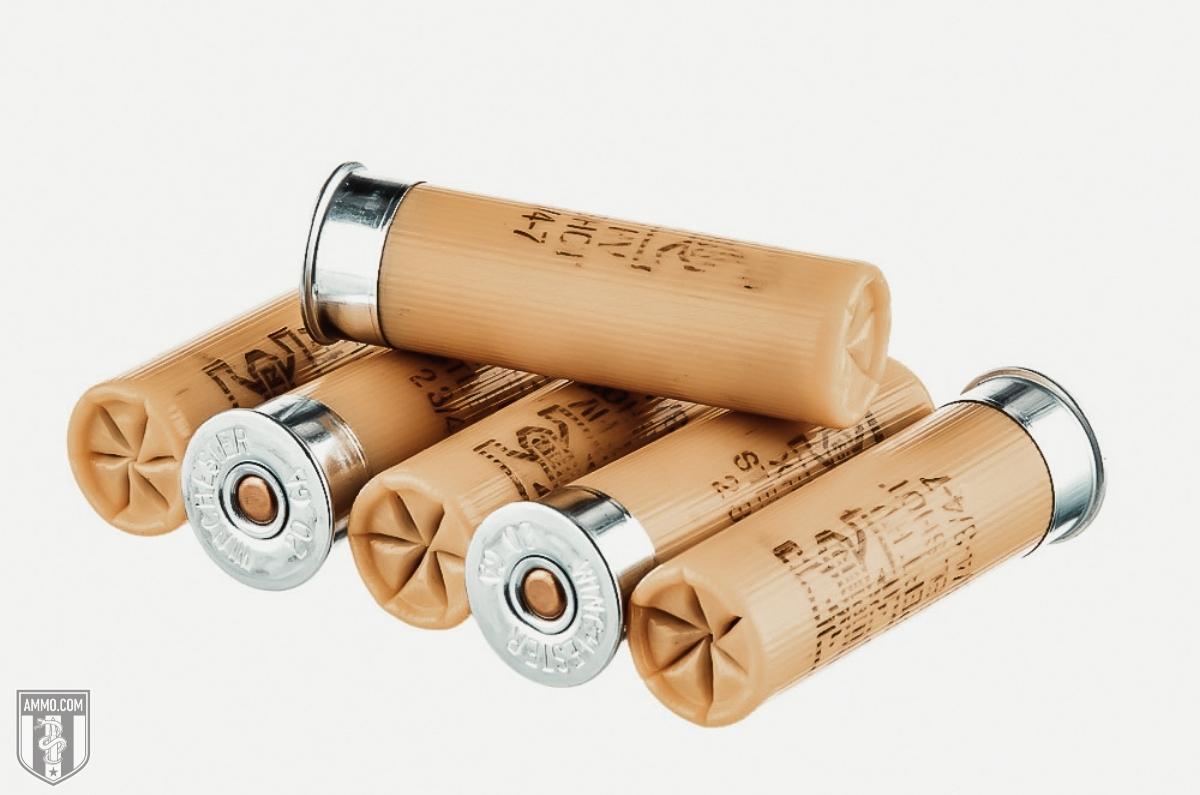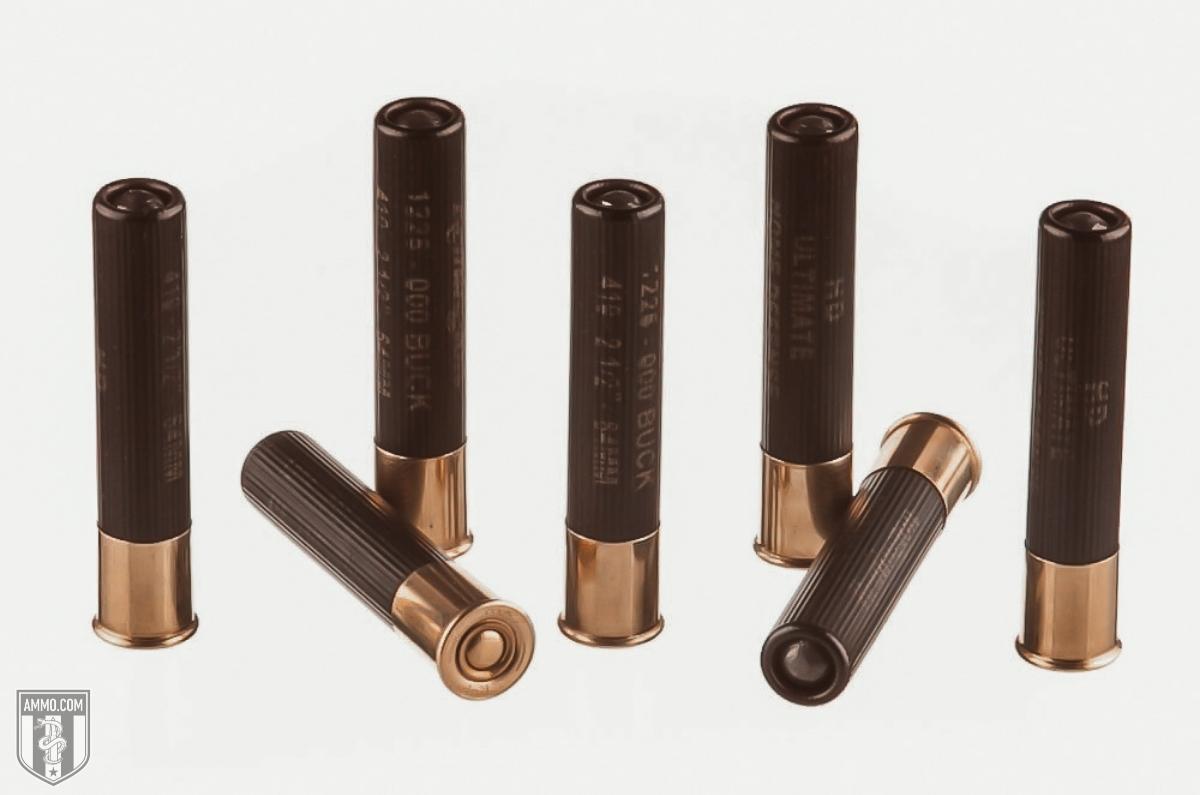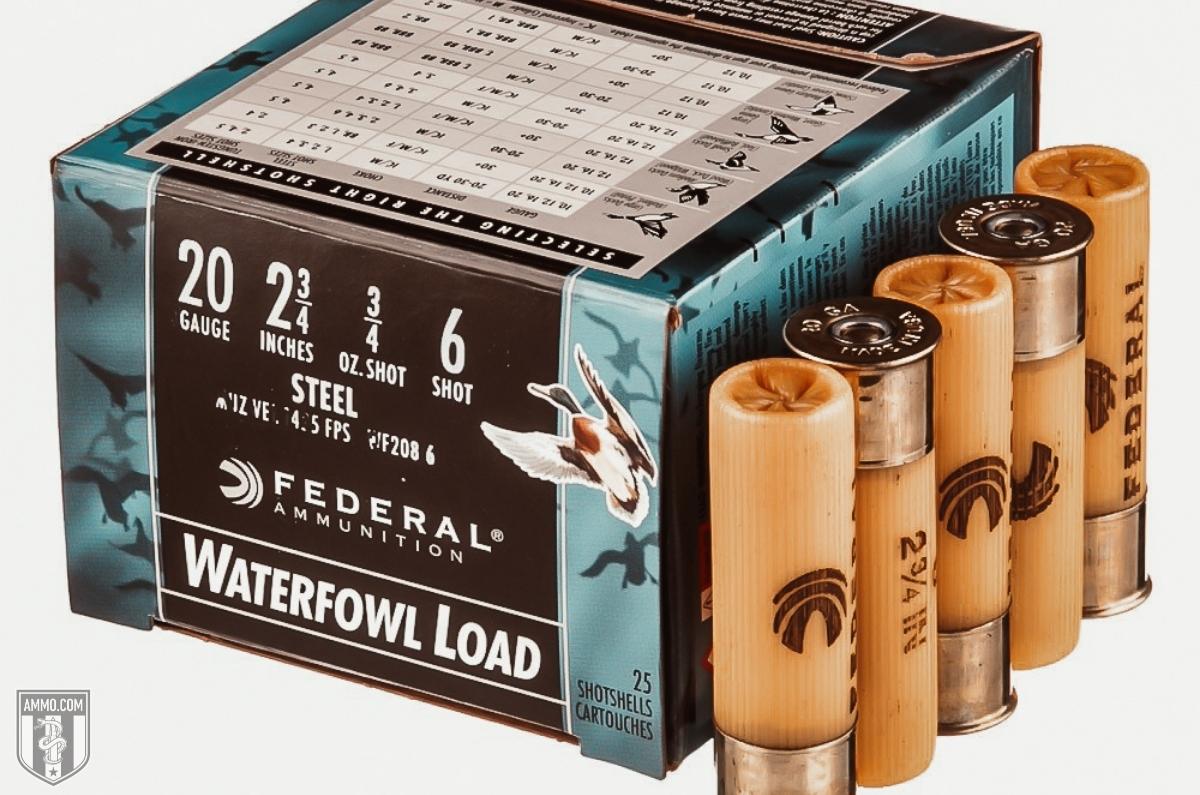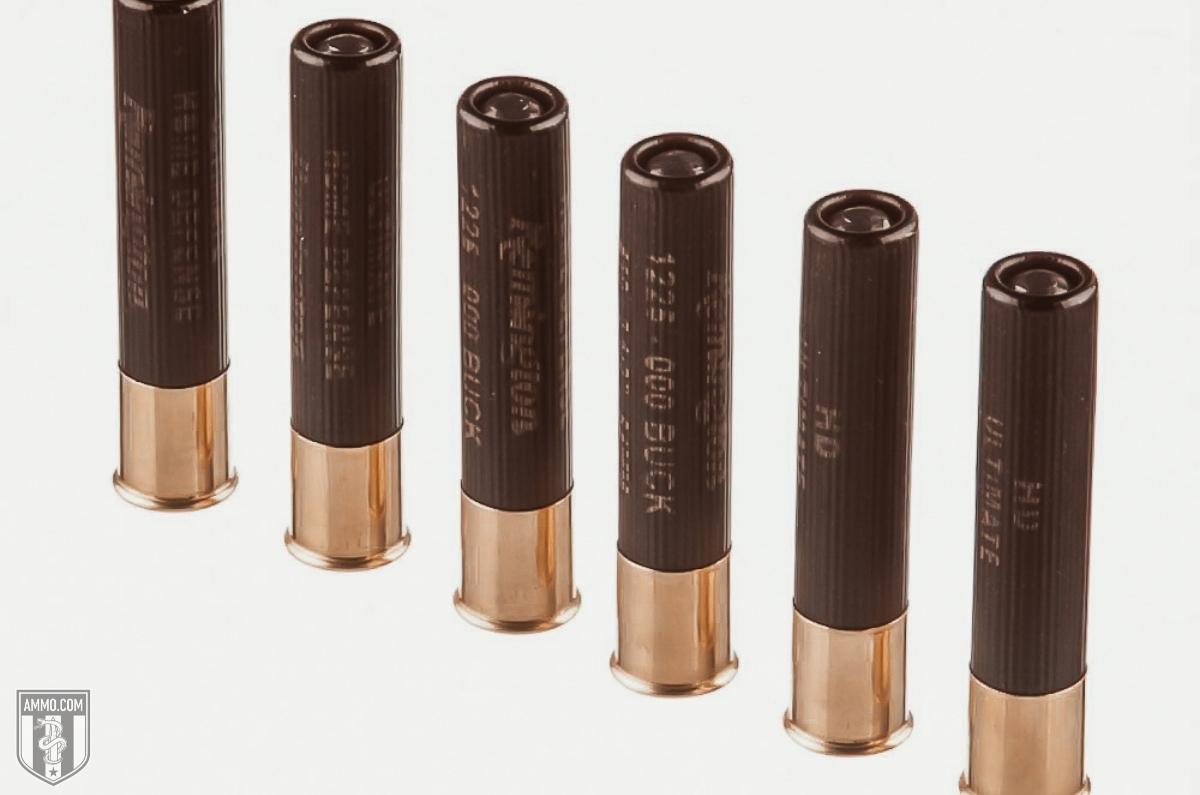410 vs 20 Gauge: Pheasant, Quail, and Whitetail - Beware!

There’s no doubt that the 12-gauge shotgun is the most popular shotgun caliber in the United States. It is extremely versatile and can handle a wide range of payloads for hunting anything North America has to offer. Furthermore, the 12 gauge is the de facto choice of military and law enforcement for all their tactical shotgun needs.
There is little question that 12-gauge shells are extremely powerful, but sadly all those ballistic capabilities come at the cost of savage recoil that some shooters simply can’t handle effectively.
For those who need something with a little less recoil but still plenty of stopping power, the 20-gauge and .410 shotgun shells are worth considering.
In this article we will compare the 20-gauge shotshell to the 410 and examine how each cartridge can best fit your needs as a hunter, concerned citizen, sporting clays shooter, or weekend plinker.
What’s the Difference Between 20 Gauge vs 410?
The difference between 20-gauge vs 410 is that the 20-gauge shotshell is larger and carries a heavier powder charge and payload compared to the 410.
20 Gauge vs 410: Understanding Shotgun Gauges
If you’re familiar with shotguns, you’ll know that a lower gauge means a bigger caliber. However, if you’re new to shotguns or firearms in general, this can be a confusing concept to grasp.
Handgun and rifle calibers are defined by their internal bore diameter. A 40-caliber handgun has 0.40 inch diameter bore. This means the larger the number, the larger the bullet the gun fires.
However, shotgun gauges are determined by a more archaic system.
Gauge is determined by the number of lead balls with the same diameter as the barrel adding up to one pound of lead.
For a 20-gauge shotgun with a bore diameter of 0.615” it would require 20 identical lead balls to add up to one pound of lead.
The 410 is unique as it goes by the more traditional measuring system of bore diameter. A 410 is the smallest gauge shotgun and has a true 0.410” bore diameter. This begs the question:
What gauge is a 410 shotgun? A 410 bore shotgun is close to 67 ½ gauge.
A Special Note On 20-Gauge Shells: Yellow is the New Black
If you’re new to shotguns you might not be aware that all 20-gauge shotgun shells are colored yellow.
This is to ensure that a shooter does not mistakenly load a 20-gauge shell into a 12-gauge shotgun as these are the most popular shotgun gauges on the market.
Were this to happen, it is possible that a 20 gauge shell could be loaded into the chamber and fall into the barrel since the 20 ga is smaller than the 12 ga. If this were to happen, the 20-gauge shell could become a barrel obstruction a might cause a critical failure that could damage the firearm and the shooter.
For this reason, manufacturers color all 20-gauge loads yellow to make them easily distinguishable from other shotgun shells.
Check out our Hornady 20 Gauge Slugs page for more slug options.
Recoil
A 410 shotshell has incredibly light recoil compared to a 20-gauge shell.
Recoil is an important consideration when purchasing a new shotgun as a round with heavy recoil will be more difficult to control and will slow your rate of follow up shots.
Recoil is affected primarily by muzzle velocity (FPS), powder charge, bullet weight, and shotgun weight.
It’s always preferable to compare free recoil on firearms of similar weight, however this is not realistic when comparing 20-gauge vs 410 as 20-gauge guns are typically heavier. A heavier gun will soak up more recoil whereas a lighter gun will be easier to carry in the field.
410 bore shotguns are typically lighter than 20-gauge guns which makes the 410 is an excellent training shotgun for a 6- to 12-year-old like the Mossberg 500 youth model weighing only 5 pounds. In comparison, a 20-gauge shotgun like a Remington 870 will weigh around 6.5 to 7 pounds.
Another thing to consider with shotgun loads is that the weight of the shot or slug is independent of the bore size. Therefore, a 1 oz slug fired at the same muzzle velocity will have similar recoil regardless of the bore diameter.
However, in general, the 410 will have around half to one-third the recoil of 20 gauge shells due to the 410 firing lighter payloads with smaller powder charges. Typical free recoil for a 410 is around 7-10 ft-lbs compared to 20-30 ft-lbs for a 20 ga. Felt recoil can be mitigated with the use of a good recoil pad, making heavier loads easier to handle.
Accuracy/Pattern Density
To understand pattern density, it’s important to understand how a shotgun ammunition works.
A shotgun shell, or shotshell, is a plastic hull with a primer at the bottom. Inside the hull is a powder charge and on top of that is a plastic cup known as a “wad” to hold the projectiles known as “shot” which are essentially just round steel or lead balls.
Shot sizes will vary depending on what you’re planning on using the shotgun shell for.
For self-defense you would want to use something larger like #00 buckshot (pronounced “double aught”), or if you’re hunting something smaller, like grouse or pheasant, a smaller option like #8 birdshot would be ideal.
One common misconception is that once the wad and buckshot leave the shotgun barrel, it behaves like a swarm of bees and scatters quickly. However, what happens is that the shot leaves the barrel in a column and begins to disperse.
There are numerous factors that affect how the projectiles disperse, such as minor imperfections on the surface of the shot, muzzle velocity, and stringing.
Stringing is a process where the shot at the top of the wad is deformed less during firing, while shot at the bottom of the wad endures the added pressure and weight of all the shot above it causing it to deform. This means that the buckshot at the top of the column will reach the target faster (because it’s more aerodynamic) than the shot at the bottom of the column.
The width of dispersion of shot when it reaches the target is referred to as pattern density.
If the pattern density is too wide, it’s possible to miss a smaller bird like a quail, at range. Conversely, if the pattern density is too tight it will be harder for shooters to score hits.
One other factor that can affect pattern density is the type of choke used in the shotgun barrel. A choke typically screws into the barrel and acts like a forcing cone, making the lead or steel shot a more compact column as they exit the barrel. Chokes will create a tighter pattern density but should not be used with slugs.
As the 20 Gauge has a wider bore diameter, it can fit more shot into a wad. This means that it will have a higher pattern density than 410 and makes it easier to hit moving targets with 20 gauge shells.
Since the 410 shell carries less shot, due to its smaller size, most 410 bore shotguns come installed with a full choke directly from the factory. A full choke will help concentrate what little shot the 410 can launch and create an extremely tight pattern at close range. However, the 410 has a hard time hitting moving targets like upland birds at distances over 30 yards since it fires less shot.
Hunting
Although the 410 is more than capable of taking whitetail with slugs, many hunters prefer the denser shot pattern of 20-gauge loads when hunting upland game and waterfowl.
When discussing hunting, many hunters separate the discussion between 410 vs 20 gauge into bird vs deer hunting. This is because the hunter has different requirements for each type of hunting.
For hunting deer sized game, both the 410 and the 20 gauge will get the job done when shooting slugs. The low recoil of the 410 is particularly appealing to beginners or young hunters who are looking to venture into the woods for the first time. Make sure to follow all state and local laws, as some areas prohibit the use of 410 for hunting deer.
On the other hand, if your state or territory allows for hunting with buckshot, then the 20 gauge is the better choice. This is due to the 20 gauge’s larger size and higher capacity for shot. More shot means more chances to hit the vital organs and ethically claim the deer.
The same holds true for waterfowl and upland game hunting, as the higher shot density of 20-gauge shells make them the better option. The 410 not only carries less shot, but it has a tighter pattern that quickly disperses at range. This makes it incredibly difficult to score killing shots on fast moving targets like upland birds, pheasant, and grouse.
The propensity to wound a bird instead of quickly killing it is higher with the 410. This is again due to the low shot count in the smaller hulls of the 410. With less shot there is a lower chance for a killing hit even with birdshot. This makes the 20 gauge a better choice for upland game.
For waterfowl and turkey, most hunters prefer a 12-gauge shotgun as they want the extra power the shells offer for these larger birds. However, between 20 gauge vs 410, the clear choice is the 20 gauge for geese, ducks, and turkey.
Don't forget to stock up on your ammo. Check out our Fiocchi 20 Gauge ammo page for more options.
Although the 410 is not the best choice for birds, it is an excellent option for pest control on your property. Rabbits, squirrels, snakes, coyotes, and raccoons will all fall to the power for the 410. Furthermore, the low recoil of the 410 makes it easy to line up follow-up shots should you need one.
Within 20-30 yards, the 410 is an excellent varmint shell where the 20-gauge might be a little bit of overkill for these small game animals.
Self-Defense/Home Defense
When it comes to home defense, it’s hard to beat a shotgun. Although some shooters contest that a handgun is the better choice, it simply does not compare to the sheer power that a shotgun offers.
For home defense, it is inadvisable to use rifled slugs as they will typically over penetrate and could hit an innocent bystander in the home or apartment next door. Buckshot is what you want loaded in your self-defense shotgun.
There is some scholarly debate amongst ballisticians as to which buckshot is the best option for home defense. Many swear by #00 buckshot as it is considered the gold standard for self-defense, however other state that #1 or #2 buckshot is more than sufficient for any home defense situation.
If you’re unfamiliar with buckshot designations, here is a chart explaining the difference.
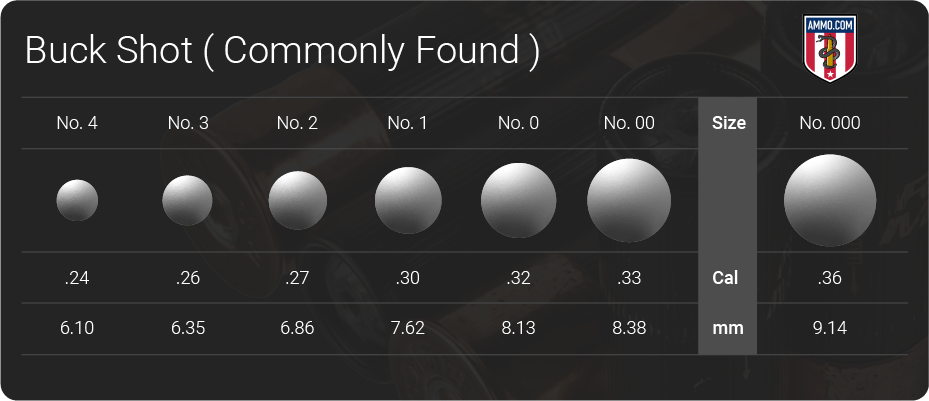
As you can see, the difference between #00 buckshot vs #1 buckshot is 0.03” in projectile diameter. This debate has been beaten to death on the Internet, however the bottom line is that any would-be home invader will likely not be able to tell the difference.
But that brings us to which shotgun would be better for home defense? 20 gauge vs 410?
Many shooters like the feel of a 20-gauge shotgun for home defense. They feel that it is a good compromise between felt recoil and pattern density. On the other hand, some like the lower recoil of 410 shells and feel they are more accurate with this ammo.
For close range engagements like those in a home, it won’t make much difference which shotgun you choose. Both will be more than effective in defending your life and the lives of your friends and/or family members. However, a 20-gauge will offer slightly deeper penetration than a 410 but it’s unlikely any would-be home invader could tell the difference or live to tell you about the shortcomings of a 410 for self-defense.
Make sure to load up with a quality buckshot (NOT birdshot, target loads, or slugs) and you should be more than adequately prepared to take on any threat that enters your home and threatens your or your family’s lives.
Ammo and Rifle Cost/Availability
The beautiful thing about shotguns is their versatility. You have so many options, from a single shot, side by side, over/under, pump-action, and even a semi-auto, the world is your oyster when it comes to shotguns.
Furthermore, entry level pump action models are typically inexpensive compared to most centerfire rifles and handguns. You can easily pick up a Remington 870 or Mossberg 500 for around $400 new in box at the time of writing.
However, this does not mean that all shotguns are so affordable. If you’re looking to get into sporting clays, skeet, or trap shooting, most competition-ready shotguns, like a Browning Citori, will command over a thousand dollars.
The 410 is unique in the fact that it will fit into the chamber of a 45 Long Colt. This led to the creation of the Smith & Wesson Governor and the Taurus Judge, two revolvers that can fire 45 LC and 410 from the same cylinder.
In terms of ammo availability, the 20 gauge will be easier to find and is less expensive than the 410.
The 20 gauge is the second most popular shotgun shell on the market, only outdone by the 12 gauge. This popularity means that the 20 gauge will be easier to locate and have a wider variety of shot sizes, factory loads, and projectiles available.
Inexpensive 20 gauge target loads from Winchester, Remington, Federal, or Estate can cost as low as $0.40/shell while premium game loads start around $1/shell and go up from there. On the other hand, 410 target loads typically start around $1/shell and premium hunting loads go for $1.50/shell or more.
Reloading
Reloading shotgun shells is something that many reloaders enjoy doing. However, as shotshells are relatively inexpensive, most reloaders do not bother reloading used hulls.
The cost savings for reloading shotgun shells is so low that only high-volume shooters ever worry about doing it, as it is usually cheaper just to buy new factory shotgun ammo. However, if you love the idea of optimizing your shotgun ammo, there’s nothing stopping you for loading your own shotshells.
Please note that shotshell reloading requires a specialized press that cannot be used for centerfire rifle and handgun reloading.
A Brief History of The Shotgun Shell
In their infancy, most firearms could fire a single projectile or multiple as they all had a smooth bore. Early firearms like those used by the settlers of the New World needed this versatility to survive by hunting small birds to deer with the same gun.
However, with the introducing of rifling during the mid-16th Century, rifles and shotguns became two separate entities with different purposes.
At this time, shotguns were mostly used for bird hunting but also saw use in law enforcement and protection details.
Did you ever “call shotgun” as a kid when getting into a car? This phrase dates back to the Wild West when the person sitting next to a stagecoach driver would carry a shotgun to protect the cargo or passengers from outlaws.
The first shotgun shell was introduced by the French gunsmith, Casimir Lefaucheux, in 1836. Most early shotgun shells were made entirely of brass as paper cartridges were unreliable and couldn’t be reloaded.
It wasn’t until 1960 when Remington introduced the plastic shotgun hull that is used today.
Check out our other shotgun shell comparisons below:
Final Shots: 20 Gauge vs 410
The 410 vs 20 gauge discussion boils down to a compromise between low recoil vs power and pattern density.
The 20-gauge is the second most popular shotgun in the United States and trails only the mighty 12-gauge. The 20 gauge shotshell offers lower recoil than a 12-gauge while maintaining more than enough stopping power to take down most upland game and deer.
The 410 gauge has extremely light recoil and is most often chambered in youth model shotguns, though many adult shotguns are available in 410. It is often considered a beginner shotshell that young shooters can use to learn shotgun handling skills before graduating to a larger caliber.
The major issue with the 410 is its limited range and low payload. Since the shotshell is smaller, it cannot carry as much shot as a 20-gauge and its lower powder charge reduces the killing potential of the small amount of shot it does fire.
The majority of shooter and hunters will opt for the 20-gauge shotgun as it offers a good compromise between a good shot pattern density with moderate recoil that can be easily mitigated with a recoil pad. The 410 is great for training young shooters, those who are recoil sensitive, or hunters who want the added challenge of shooting with a self-imposed handicap.
No matter which cartridge you choose, make sure you stock up on ammunition here at Ammo.com and I’ll see you on the range!
Ammo Comparisons
- .308 vs 5.56
- 6.5 Creedmoor vs .308
- .300 Blackout vs .308
- .300 Win Mag vs .308
- .243 vs .308
- .308 vs .30-06
- 7mm-08 vs .308
- .270 vs .308
- 7.62x39 vs .308
- .223 vs .308
- .338 Lapua vs .308
- .380 ACP vs 9mm
- .223 vs 5.56
- .300 Blackout vs 5.56
- 9mm vs 45 ACP
- 9mm vs 40 S&W
- .357 SIG vs 9mm
- 10mm vs 9mm
- 9mm vs 9mm Luger
- .243 vs .270
- .300 Win Mag vs .30-06
- .270 vs .30-06
- .40 vs .45
- 38 Special vs 357
- 9mm vs 40 vs 45
- 5.56 vs 7.62x39
- 338 Lapua vs .30-06
- .30-30 vs .30-06
- 300 PRC vs 338 Lapua
- .30-06 vs 7mm
- 300 Win Mag vs 338 Lapua
- 300 PRC vs 300 Win Mag
- 300 WSM vs 300 Win Mag
- 338 Win Mag vs 338 Lapua
- 12 Gauge vs 20 Gauge
- 10mm vs 357 Mag
- .30-30 vs 7.62x39
- 224 Valkyrie vs 22-250
- 17 HMR vs 22 Mag
- 7.62x39 vs .300 Blackout
- 45 ACP vs 45 Auto
- 45-70 vs 30-30
- 300 Blackout vs 223
- 357 Magnum vs 9mm
- 350 Legend vs 300 Blackout
- 224 Valkyrie vs 223
- 45 ACP vs 38 Super
- 6.5 Grendel vs .308
- 17 HMR vs 22 LR
- 10 Gauge vs 12 Gauge
- 22-250 vs 223
- 45 Colt vs 45 ACP
- 350 Legend vs 30-30
- 5.7x28 vs 223
- 5.7 vs 9mm
- 5.56 vs 5.7
- 22 vs 9mm
- Buckshot vs Birdshot
- 450 Bushmaster vs 308
- 450 Bushmaster vs 223
- Buckshot vs Slug
- 6.5 Grendel vs 5.56 vs 223
- 6mm ARC vs 6.5 Grendel
- 44 vs 45
- 458 SOCOM vs 5.56
- 357 vs 44
- 32 ACP vs 380
- 300 Win Mag vs 338 Win Mag vs 338 Lapua Mag
- 450 Bushmaster vs 458 SOCOM vs 50 Beowulf
- 6mm Creedmoor vs 6.5 Creedmoor
- TMJ vs FMJ
- 44 Special Vs 44 Magnum
- 45 90 vs 45 70
- 6.8 Western vs 6.8 SPC
- 50 Beowulf vs 50 BMG
- 26 Nosler vs 6.5 PRC
- 28 Gauge vs 410
- 6.8 SPC vs 5.56
- 6.8 SPC vs 6.5 Grendel
- 6.8 Western vs 7mm Rem Mag vs .28 Nosler
- 6.8 Western vs 6.5 Creedmoor
- 22 Hornet vs 223
- 6.8 Western vs 6.5 PRC
- .410 vs 12 Gauge
- .410 vs 20 Gauge
- 22 LR vs 22 Mag
- 6mm ARC vs 243
- 7mm-08 vs 270
- 243 vs 6.5 Creedmoor
- Nickel vs Brass Casing
- 204 Ruger vs 223
- 50 Beowulf vs 5.56
- 260 Remington vs 6.5 Creedmoor
- 6mm Remington vs 243
- 28 Nosler vs 300 PRC
- 50 Beowulf vs 50 AE
- 22 Nosler vs 22-250
- 450 Marlin vs 45-70
- 300 Win Mag vs 300 Norma
- 458 SOCOM vs 300 Blackout
- 38-55 vs 45-70
- 22 Hornet vs 22 LR
- 300 Norma vs 338 Lapua
- 338 Lapua vs 50 BMG
- 28 Nosler vs 300 Win Mag
- 28 Nosler vs 6.5 Creedmoor
- 204 vs 22-250
- 458 SOCOM vs 45 70
- 44 40 vs 45 70
- 6.8 SPC vs 6.5 Creedmoor
- 450 Bushmaster vs 30-06
- 7mm Rem Mag vs 300 Win Mag
- 30 Carbine vs 223
- 25-06 vs 30-06
- 26 Nosler vs 28 Nosler
- 16ga vs 12ga
- 30 06 vs 7.62 x54R
- 9mm Makarov vs 9mm Luger
- 350 Legend vs 223
- 30 Carbine vs 5.56
- 6.5x55 vs 6.5 Creedmoor
- 6.5 Creedmoor vs 270 vs 25-06
- M193 vs M855
- 450 Bushmaster vs 458 SOCOM
- 6.5 Grendel vs 6.5 Creedmoor
- 350 Legend vs 5.56
- .277 Fury vs 6.8 SPC
- 277 Fury vs 300 Win Mag
- 10mm vs .45 ACP
- 277 Fury vs 223
- 6.8 SPC vs 300 Blackout
- 6.5 PRC vs 6.5 Creedmoor
- 277 Fury vs 308
- 277 Fury vs 6.5 Creedmoor
- 350 Legend vs 450 Bushmaster
- 277 Fury Vs 5.56 NATO
- 10mm vs 40S&W
- 32 ACP vs 9mm
- 32 Special vs 9mm
- 8.6 Blackout vs 300 Blackout
- 30 Super Carry vs. 9mm
- 5.56 vs 9mm
- .50 Action Express vs 9mm
- 7.62x25 vs. 9mm
- 10mm vs 44 Magnum
- 300 Blackout vs 300 Win Mag
- 6.5 Grendel vs 300 Blackout
- 460 Rowland vs 10mm
- 300 RUM vs 300 PRC
- 300 Norma vs 300 PRC
- 45 GAP vs 45 ACP
- 7mm PRC vs 300 Win Mag
- 300 PRC vs 6.5 Creedmoor
- 300 PRC vs 308
- 357 SIG vs 357 Mag
- 7.62x39 vs 7.62x51
- 243 Win vs 223 Rem
- 30 Nosler vs 300 PRC
- 6.5 Creedmoor vs. 30-06 Springfield
- 450 S&W vs. 44 Magnum
- 6.5 Creedmoor vs. 300 Win Mag
- 454 Cassull vs. 45-70 Govt
- 454 Cassull vs. 44 Mag
- 7.62x54r vs. 308 Winchester
- 22 ARC vs. 223 Rem
- Subsonic vs. Supersonic Ammo
